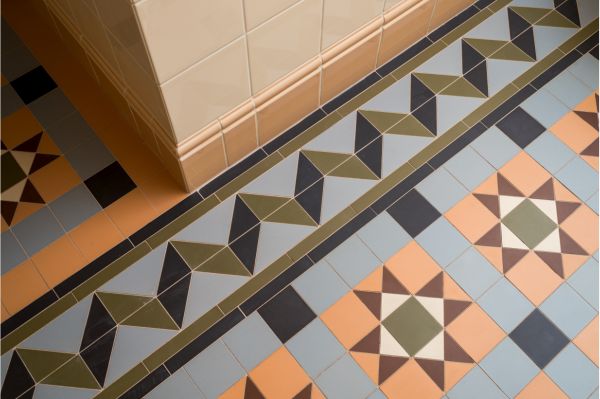Texture in Flooring: How to Create Visual Interest and Depth

When it comes to interior design, one school of thought is that spaces should be rich with varied textures and colors, which creates an environment that is visually interesting, pleasing to the eye. There are a number of ways to accomplish this look. You can mix things up with your accessories, textiles, or other decor, or you can take things a step further and add texture to your floors.
Hardwood, Stone & Tile

If you are looking to overhaul your space with new hard surface flooring, there are several options that will bring texture into your home. Consider patterned tile, distressed hardwood flooring, or natural stone.
Although some climates benefit from using tile throughout living space, it is more commonly seen in smaller rooms, where you can get bold with patterns that would tend to make a larger space feel too chaotic and busy. Consider where you might benefit from tile, and use it there, and choose something else for larger spaces.
Natural stone floors can bring the texture of the outdoors in. Consider slate or travertine, which are available in a wider variety of cut shapes to suit your decorating plans. Although it’s not a “natural stone” variety, thin-sliced brick is available for use as flooring and brings a similar vibe.
Distressed hardwood is the most expensive of the above options, but it comes with an air of permanence. This flooring says, “I have been here forever, and I am not going anywhere” with its natural presence! Expect to find wider planks, complete with knots and imperfections, and manmade distress such as scrapes, to bring a vintage aesthetic to any space. As an alternative, check out engineered hardwoods, which have a thin layer of actual wood over a substrate core; they can give you the same look at a fraction of the cost.
Vinyl and Laminate Flooring

We are fortunate to have the option of choosing from a number of floors that can bring the look of tile, stone or hardwood at a smaller price tag. If you are looking for something to use that is low maintenance and can even be self-installed, consider vinylplank or tile, or laminate flooring.
Vinyl and laminate flooring are similar in that both types snap together using tongue and groove technology, but vinyl is entirely inorganic while some components of laminate are made from natural materials. This is important to consider if you will be putting these floors in an area that could get wet, although laminate products have come a long way in the waterproof category.
You can find both vinyl and laminate flooring in a variety of patterns including some that mimic tile and stone, as well as different finishes of wood, in varied widths, so you can get the look you want for your space.
Rugs

If you can’t make new flooring fit your budget, an easy and affordable way to bring interest and texture to your existing floors is by investing in some area rugs. Available in a limitless array of colors, styles, and patterns, you are sure to find something that will suit your style.
You can place them directly over your old floors, or even over wall-to-wall carpet, to create a layered effect, or set off a space. Consider different types of natural materials such as sisal or jute, which have a lot of texture.
Ready to go floor shopping? Visit the design staff at Larry Lint Flooring. They will help you with options that fit your budget, order your materials, and set you up with professionals so your flooring install can be as easy as possible. Your space will have the new style you want in no time.
